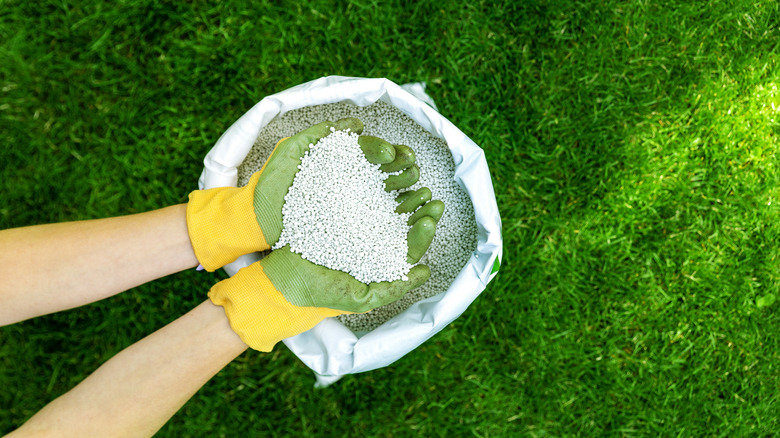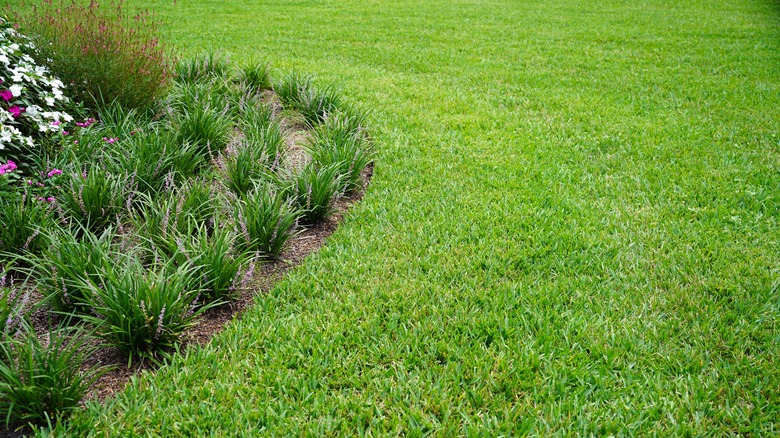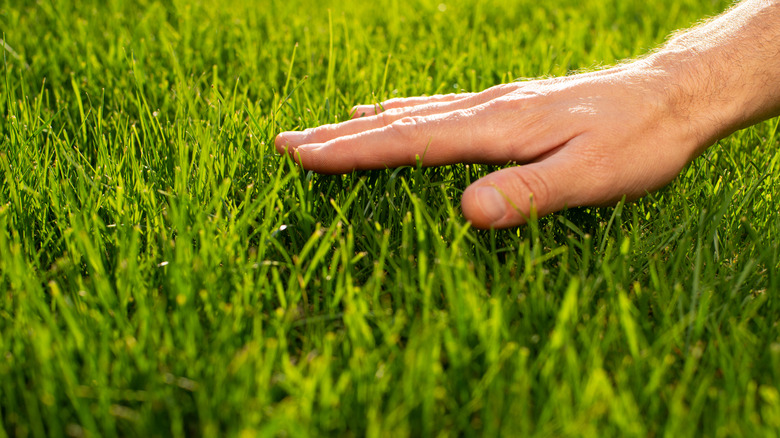This Is The Best Time Of Year To Fertilize Your Lawn
Fertilizing your lawn is an important step in caring for it. In fact, creating a fertilizing schedule and feeding your lawn all the nutrients it needs a couple of times a year is a good way to help your grass better fight off weeds, develop stronger roots, and become more drought-resistant. While you can fertilize your lawn in the spring, summer, or fall, the best time to fertilize for the most benefits depends on what type of grass you have and where you live.
In the United States, turf grass is typically separated into two categories: cool-season grass and warm-season grass. These two varieties have different growing patterns, and because of this, the most effective time to fertilize each type is different. The best time to feed cool-season grass is in the fall, while the best time to feed warm-season grass is in late spring. This schedule works best because it allows you to enrich your soil with all the nutrients necessary for good growth before your lawn needs them.
How to know what type of grass you have
Now that you know what the best time to fertilize each type of grass is, it's time to figure out what variety of grass you have. Cool-season grass is most commonly found in the Northern U.S. because it prefers a colder climate and grows best in spring and fall's cooler and wetter months. Types of cool-season grasses include Kentucky bluegrass, ryegrass, and fescue. While the best time to fertilize cool-season grass is in fall, it also does well when fertilized in the early spring after it comes out of its winter dormancy. However, the worst time to fertilize cool-season grass is in the summer because this variety of grass experiences the most stress and least growth during that period.
Warm-season grasses are typically found in the Southern U.S., specifically along the Gulf Coast, in Southern California, and all along the Southern Atlantic Coast. Warm-season grass includes varieties like Bermuda, Bahia, St. Augustine, Centipede, and Zoysia. These grasses experience their highest growth period during the hottest days of the year and may turn brown in the winter when the temperature drops below 60 degrees Fahrenheit. Warm-season grass does best when fertilized in spring but also does well when fertilized throughout the summer during its peak growing season. The worst time to fertilize this variety is in early spring, before it starts growing or in late fall, right before dormancy.
What if you live somewhere between cool and warm?
The tricky part comes in when you live in an area that lawncare experts typically call the transition zone. The transition zone is the area of the U.S. that has a moderate climate with chilly winters and hot summers where both cool-season and warm-season grasses can grow. The transition zone typically includes states such as Virginia, North Carolina, Kentucky, Tennessee, Arkansas, Oklahoma, North Texas, and parts of California, Arizona, and New Mexico.
If you live in a transition zone, you could have a lawn with either cool-season or warm-season grass (or a mix of the two). The best way to figure out which grass is the predominant type in your lawn is to look at when it turns brown. Warm-season grass typically starts turning brown after the first frost of the year, while cool-season grass may stay green all year (with enough water) or turn brown during the hottest and sunniest months of the summer.


